|
by Shawna Puustinen Primary multiage, Riverbend School Artful Teaching has giving me so much to think about. I have spent the last decade integrating art into my language arts, science and social studies units. An art project here, a drawing there, a model of a neighborhood made out of milk cartons. That’s art, right? I guess it never occurred to me that I could use art to teach social studies, math, science and language arts. I would love to say that this realization resulted in a complete overhaul of my teaching, in which every lesson was embedded with artful learning. Of course, I can’t say that. I can say that I have embedded artful learning routines into my day (well, not everyday). I am slowly but surely building my understanding and gaining the skills needed to be an artful teacher. Our school has adopted the One School, One Book initiative. For the past two years our amazing PTO has picked one book and purchased a copy for every student, staff and employee in our building. The idea being that we will all read the book and be able to talk about it. Teachers read the book in their classrooms, students take their copies home and the school hosts some school community events and activities. This year, Arctic Aesop’s Fables by Susi Fowler was the book chosen. Each classroom picked one of the fables from the book to design a bulletin board. What started out as a small cooperative art project ballooned into a full-fledged unit of study. We looked at characters, settings, problems, solutions, and the moral of each story. We then compared the two stories, looking for similarities and differences. We had lots of great discussion about friendship and good sportsmanship. On what I thought was going to be the last day before I was to leave on vacation, the students worked together in small groups to create tableaus for their favorite parts from one of the two stories.
On Monday I boarded a plane for a wonderful week in the Florida sun, completely forgetting that months before I had promised the kids that we would do a puppet show. Guess who didn’t forget. My daughter, who just happens to be one of my second graders this year. Ugh! Aren’t there rules about having your own kids in your class? Just kidding. It has been a blast having my daughter in my class. So, that’s how it happened. I got back from vacation and my daughter reminded me and the rest of our class that I had promised a puppet show. Clay, sticks and imagination… I am going to start this section by confessing that I hate puppetry. Nothing makes me feel sillier than interacting with a puppet. I have tried...really. I have spent countless uncomfortable minutes having conversations with Impulsive Puppy and Slow Down Snail. It always leaves me feeling...weird. So, I knew that trying to teach a puppetry unit was going to stretch me in many ways. I started the unit with dot sticker popsicle stick puppets. The kids each got to draw eyes and mouth on their dot sticker and put it on a tongue depressor. Most of the kids were pretty excited, but a few were less than excited to be holding a tongue depressor puppet (oh, how I could relate to them). With great enthusiasm, I demonstrated arm positioning, puppet posture, large puppet movements (walking, running, going up and down stairs, lying down, getting up, etc), wrist movements (yes/no, looking up/down/around, reading, etc.), puppet emotions, and voice projection. The same few less-than-excited puppeteers actively tried to sabotage our puppetry lessons. Their poor tongue dispenser puppets experienced great head trauma while being repeatedly banged against tables and the floor. They refused to participate in voicing activities and their “I am too cool for this” attitudes were starting to spread. I was ready to call it.
As soon as the popsicle sticks were attached the kids were becoming their puppets. A few kids, were working together creating quick puppet skits. I still had one very reluctant artist. He was about as excited about creating his puppet as he had been about using a puppet. The kids got to pick one puppet to leave at school for the puppet show, and then take the other puppet home. One girl came back the next week with more than 10 little clay creatures she had made at home. It was neat to see how her creatures evolved from simple to very detailed and sophisticated.
During a morning meeting time, we watched two videos of people putting on shadow puppet plays. After watching the videos, I used the “See, Think, Wonder” thinking routine to help my kids process what they had seen. I was very impressed with what they observed. Many picked up on the techniques the actors were using to make their characters come to life. They noticed things like how voices changed from one character to the next. How the puppeteers used multiple sticks to move different parts of the puppets. They noticed the props changed from one scene to the next. They wondered about what would happen next in the stories and how the puppeteers made their puppets. As I watched and listened to them share with each other, I saw engagement, inclusion, success. The playing field was level. Each one of them, regardless to their background, learning needs, age, grade, etc., was able to share something that they saw or thought or wondered. Since the tableau process is very familiar to my students, I used the same process to get them started with planning their puppet skits. The groups did their thinking and sharing just like in tableau. When they were ready to plan, I had them go to tables to brainstorm what they would need to make their scenes works:
Tomorrow is our big production. The kids haven’t even finished the scripts, but I think it will be okay. I told them that I would video each of their skits and then we could all watch them together on the big screen in the room. All but one seemed really excited about this. As I am sitting here writing this, I can’t help but smile. These kids have done some amazing work in the past few weeks. It goes way beyond close reads, reading comprehension and craft projects. They connected to a story, stripped it to its bare bones, extracted the underlying message and then rewrote it in their own words. They worked cooperatively in groups. They explored new and old art forms. They created. They problem solved. They observed. They asked questions and found answers. They supported one another. They tried new things. They took risks. They stepped outside of their comfort zones. They failed. They persevered. It would be hard not to be proud of the work they have done. So tomorrow, no matter what happens, I will stand and applaud each of them with genuine admiration.
And it all started with one fable, from one book.
0 Comments
by Katy Goodell 1st Grade, Riverbend Elementary ,Artful Teaching has become part of every day in the classroom. Whether it’s the vocabulary I’m using, a thinking routine, the actors toolbox, or tableaus, some part of each of our day involves techniques and skills I have acquired this year through this amazing opportunity. I have decided to share some pictures of some things I have done in my classroom using tableaus. I personally believe that handing students a paper and pencil doesn’t actually show all that they can do, especially when it comes to assessments. So, this year I chose to use tableaus as formal and informal assessment tools. In these first three photos you see students laying on the floor in different shapes. We went through the actors toolbox then dove into some tableau work with plane shapes. During this time, students were learning all about different kinds of shapes in math. I used this time to include some tableau work to assess how the students were understanding sides, vertices, and angles. You will notice that all three tableaus are on the ground. One of the characteristics of a tableau is that there are levels. Students seemed to really struggle through figuring out how a plane shape could have different leveles. They were so stuck on the fact that it’s two dimensional and the fact that they see these shapes as something flat. Next year, when I go through these lessons again, I really want to discuss in depth that just because a plane shape is flat doesn’t mean it has to be flat on top of a surface. It was really interesting to see the students struggle through this. When we debriefed after our tableau work, students were surprised and seemingly caught off guard when I brought this to their attention. This made me reflect a bit on my teaching during these lessons. It showed me that I didn’t explain that just because it’s a plane shape, it doesn’t mean that it has to be “flat on the ground.” With all of that being said, the kids were still successful during this process and they weren’t using a pencil and a piece of paper. They were reflecting on the different attributes of plane shapes and discussing how they could create those shapes as a team. Each team was able to create a plane shape without support from anyone other than their own team. It was fun to watch them go through Think, Share, Plan, and Create. They could make it through Think and Share, but once we got that far, they were so excited to plan and then create that most of them would just start it. I had a hard time with that at first. I couldn’t decide if it really was appropriate to stop them when they were so excited to learn and create together. But I quickly got over that because it caused more issues than success. Throughout the year I have gotten more and more comfortable with the tableau process, which has me extremely excited for D.C. and next years implementation! In the next set of photos, you see students at different levels. You also see students being assessed once again. It was so great to have a tool to use this year aside from a paper and pencil. This second set of photos was taken during my formal observation earlier this year when my principal came in to observe. I had been talking about Artful Teaching and how much I had been enjoying spending some of my time outside of school at these amazing workshops when my principal said, why don’t you show me what you have been doing… There are so many times where I feel that we as teachers feel like we have to show what we are doing with the curriculum and our implementation of it, that we forget there is an art form to teaching. Artful Teaching has helped me express my teaching art form in ways that I don’t think I would have come up with on my own. During this lesson, my students were being assessed on what they had learned through the week about solid shapes. They had to consider the faces, verticse, sides, and angles. This was a very challenging lesson and assessment tool. We had done quite a bit of work with our foam solid shapes, and I knew my students had learned and understood quite a bit about the attributes about solid shapes, but they honestly blew me away during this assessment. Each group went through Think, Share, Plan, and Create. Through out this process, I was walking around listening to the different thoughts and plans they had. Their consideration for all of the attributes of these shapes were amazing. This really gave then the opportunity to think about the shapes that each solid shape have within them. As I walked around the room I heard groups discussing how the cube has square sides and how a pyramid has a square base. These are things that we had discussed but when they actually had to apply those attributes to a real life creation of these shapes, they had to think more deeply about what each shape really looks like. Some groups were more successful than others. I found that students had a hard time deciding if the attributes that one friend had shared were actually true in regards to the solid shape they had chosen to create. It was also hard for students to decide what each person was going to do. They were all so excited about what they had learned that they wanted to play every part.
We did these tableaus a few different times so each group had an opportunity to create different shapes. As we continued the work, the tableaus got more and more detailed. I am so grateful for the opportunity to be part of such an amazing experience. I have grown so much as an educator and I can’t wait to continue this experience next year with my peers and my students. Observations by Becky Engstrom 3-5th Grade TED Specialist, Gastineau and Harborview Schools BACKGROUND As a specialist serving intermediate students grades 3 through 5, I have always rotated language arts units on a 3-year basis to be sure students are offered an eclectic mix of content supported by lessons to improve reading and writing skills. One of my favorite units has always been an art biography unit. Students would do research on an artist collecting pertinent facts by taking notes. They would use the notes to write a three paragraph report on their chosen artist. They would write haiku poetry about their artist and the art work. They would create a piece of work combining their artist’s style and beliefs with their own, then they would support the piece they created with a description explaining their reasoning behind their work of art. All these parts are then mounted on a poster board which has always made for a beautiful display. CHANGE After signing up and committing myself to the study of Artful Teaching, the first thing I wanted to do was change this unit to create more opportunities for authentic artful thinking using a variety of thinking routines from different thinking dispositions. I experimented with a selected artist to experience different routines that would help students when they finally selected the artist they wanted to study. I chose Frederic Remington to learn and model different thinking routines. We did a verbal See/Think/Wonder in table groups with different Remington pieces, then used the same pieces to do a verbal Beginning/Middle/End. We experienced Step Inside with a work from Remington. We studied desert vocabulary (mesa, plateau, canyon, butte, saguaro, ocotillo, etc.) and used that vocabulary to create tableaus. ON THEIR OWN After students selected their artist, gathered notes, and wrote their report, I selected a piece from their artist, printed it out, and students wrote their See/Think/Wonders on the printout. Students also selected a piece from their artist that they wanted to attempt to turn into a Tableau (step inside). The student who selected their piece would become the tableau director and had to put people in position until they were satisfied with the outcome. It gave me a good understanding of which students had excellent communication skills and which students needed improvement. It also helped me see the students who noticed many details and the ones who did not. I would have to bring focus to areas in the piece with questions… “What direction are they looking?” “What is their hand doing?” The amount of information I received from this one activity was a true eye-opener! Students also extended their thinking by creating a piece of art that connected their own thinking to the artist they were studying. CRITIQUING AN ARTIST Students wrote a research paper on the artist they picked. The last paragraph was their opinion of the artist they selected. I especially enjoyed reading these paragraphs. NEW PROJECTS DISPLAYED IN RETROSPECT
Although I believe the old poster board displays were more visually pleasing and beautiful, the new displays showed more artful thinking; the most beautiful moment to catch is proof of a brain in action. Whereas the old displays had more writing skills involved, the new supported the process by which learning took place. It was inspiring to watch the students make incredible observations. To listen to the details noticed to create the tableaus was a treat. To read their observations of the students’ chosen artist was deeply satisfying. Teaching became more passive, as if I handed the wheel to the students because they were ready to drive. It’s scary, and wonderful at the same time. by Elisabeth Hauser, Harborview Elementary, Kindergarten Introducing kindergartners to sea week may be one of the best reasons to be a kindergarten teacher. There’s something that amounts to pure joy in uncovering a huge group of sea urchins under a rock, or the slippery curvy movements of a prickle back with children for the first time. Our time at the beach was amazing! We made so many discoveries and were able to use important property words to describe their physical characteristics. We used our observational skills to notice animal movement and interaction with their environment (and ourselves). In coming back into the classroom, I wanted to see what my children had learned and how they could represent this new knowledge to each other. And so I gave them a challenge: We’ve practiced our acting skills throughout the year with guest actors and individual “tableau” to help us represent characters in some of the books we’ve read. We’ve used the phrase “actor’s neutral” to control our bodies before acting. We’re familiar with the concept and role of an audience. So we’ve had some preparation already. For this tableau experience, our goal was three fold:
Before giving children their group assignments or photo, I modeled a performance with a parent helper in the classroom. My emphasis was on teamwork and kindness during practices, as this was certainly a piece I was worried about as a kindergarten teacher. I placed children into small groups of 2 or 3 children with an animal assignment (which included a familiar photo of the tide pool animal), giving groups 10 minutes to practice and rehearse their role. Then, it was time to perform. Each group’s performance began in the “actor’s neutral” stance. This gave them an opportunity to check their bodies and also gave the audience an indication that they were ready to begin (and, truly, we kind of need to have “audience neutral” at times in kindergarten!). Students were in control, had a plan, and really thought through the movement (or lack of movement). What I loved most was the response of the audience. Students were enraptured because the act was also a game for them – their job was to try and guess what the tide pool animal was. I encouraged children from the audience to explain what clues brought them to their conclusion. It demanded that children look for details in the performance – like the squirt from a clam or the small spikes on top of a still sea urchin. OK, fine, I loved a lot about this experience. So I’ll just mention the other really important piece – the children were elated. They loved working with each other! Learning should be a joyous experience, no matter the age (but goodness it is so important for young children). They should be working together, creating together, and learning together. This year of focused arts integration has been such an important reminder to me of what young children are capable of if they are given the right amount of guidance, modeling, and opportunities (for mistakes and successes!). And, that it’s ok for me, as the teacher, to take risks and make few mistakes along the way to find those joyous and meaningful successes.
Engaging Learners in Reading Wonders using Arts Integration by Nancy Peel JSD Elementary Instructional Coach So, what is “Tableau” anyway? Tableau is short for the French term, “tableau vivant”, which means, “living picture”. It is a theatre technique that shows a “snapshot”, or a frozen moment in time. The Story: It was a dark and stormy night in February. A small group of intrepid JSD teachers, administrators, community members and fearless school board members got together to CREATE tableaus. Not the usual activity when these folks get together, but worth exploring and adding to our practice! Deborah Brzoska, a teaching artist associated with the Kennedy Center guided us through a “close reading” lesson from a 5th grade unit in Reading Wonders. After the first brief reading for general understanding, she showed us how to take the plunge and bring the text to life with our bodies! We were divided into five groups, each being given a short section of text about Rock Formations from the book. Our task was to cooperatively re-read the text section we were given and to use our “actor’s tools” (body, facial expression, imagination) to illustrate the rock formation process described. After a short period of time to prepare, we were charged with “performing” our tableau for the other groups to see. Our task was to create a tableau that clearly showed the process we were reading about. As is often the case, when we are introduced to a new idea that is outside our comfort zone, there is trepidation and subtle resistance. However, Deb demonstrated enthusiasm and support as she guided us through the process of using tableau as a way to help students practice newly learned comprehension strategies and develop understanding of complex text. |
ArtStoriesA collection of JSD teachers' arts integration classroom experiences Categories
All
|
|
|
Artful Teaching is a collaborative project of the Juneau School District, University of Alaska Southeast, and the Juneau Arts and Humanities Council.
|
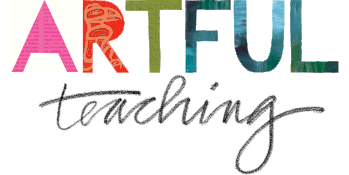
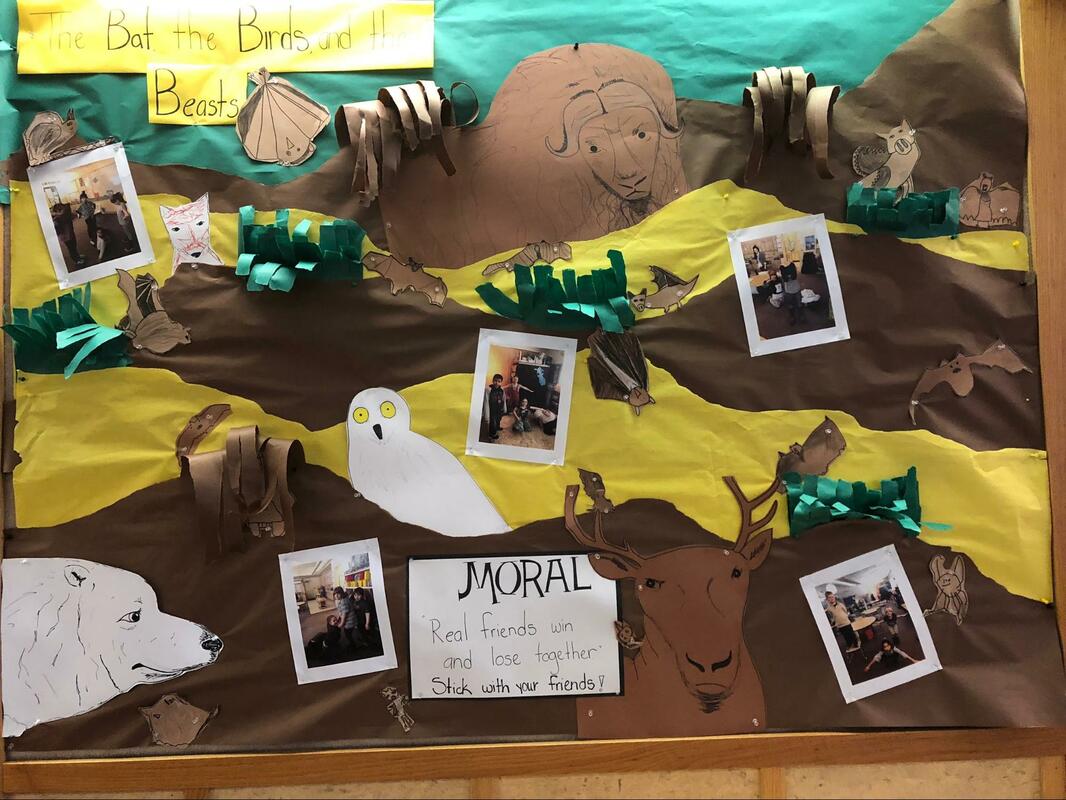
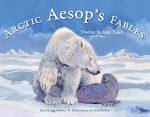
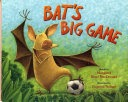
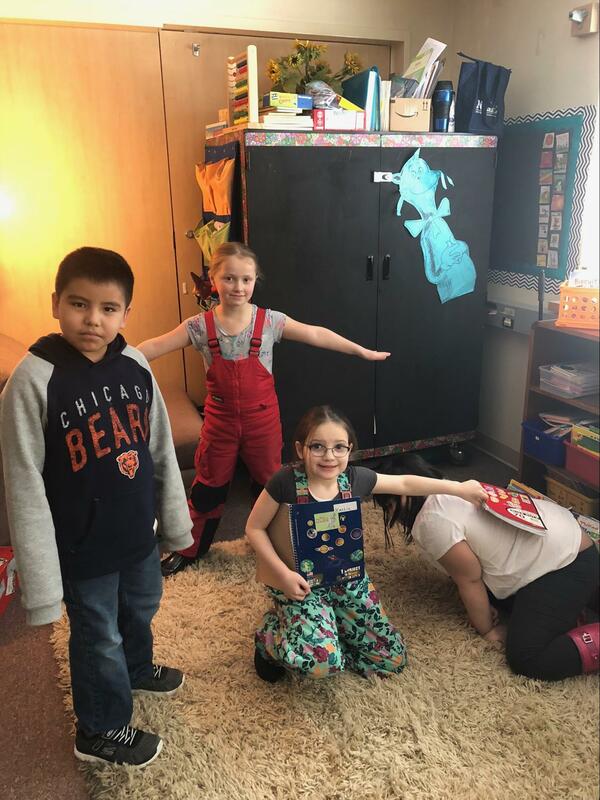
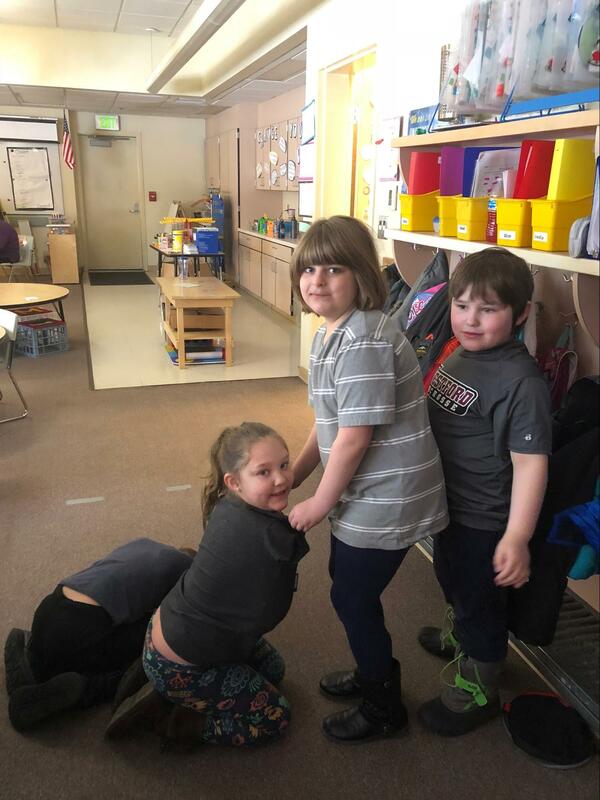
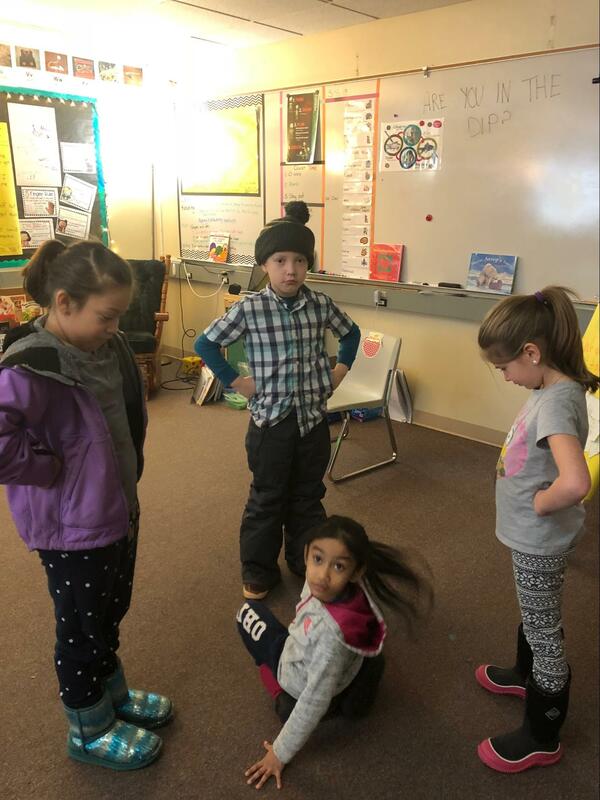
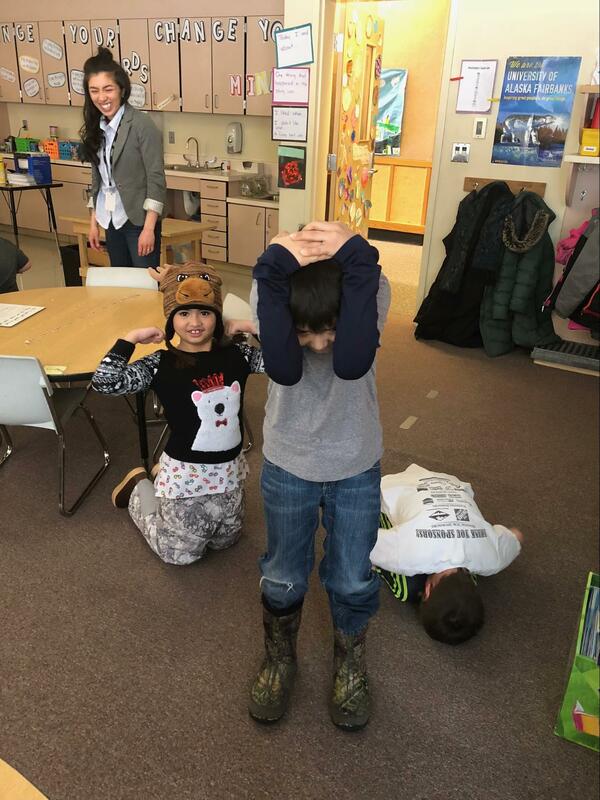
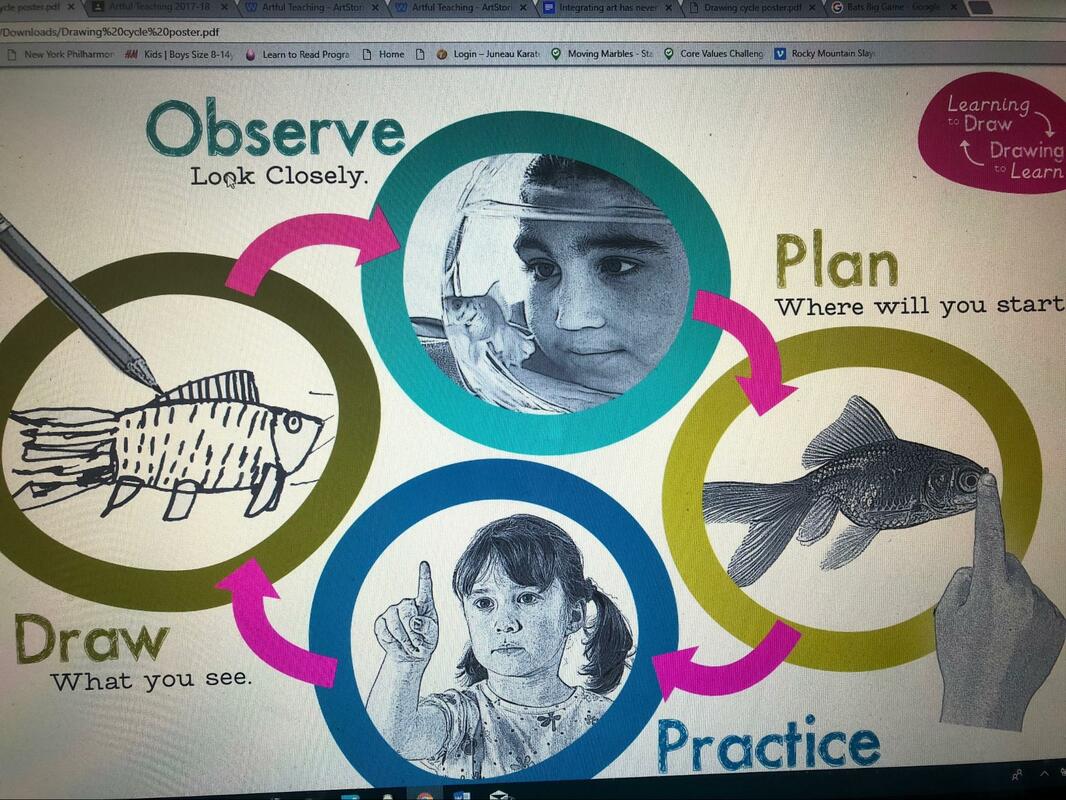
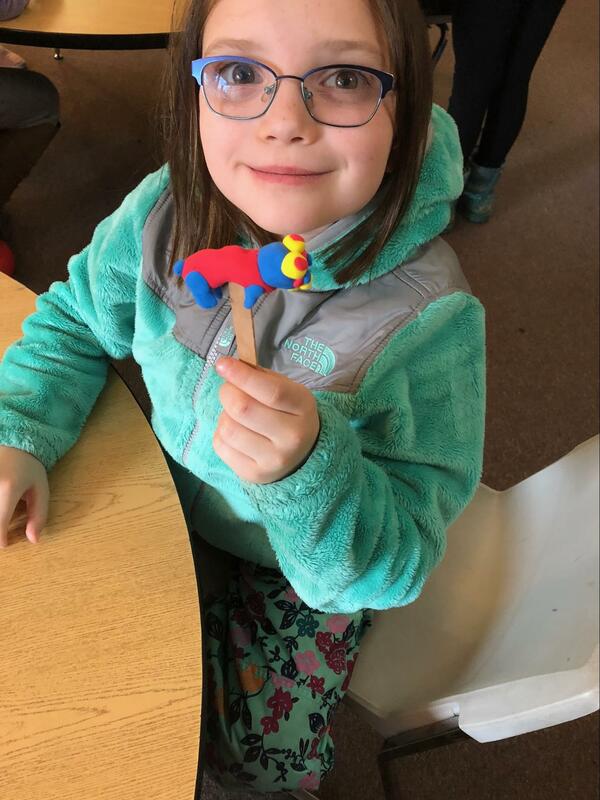
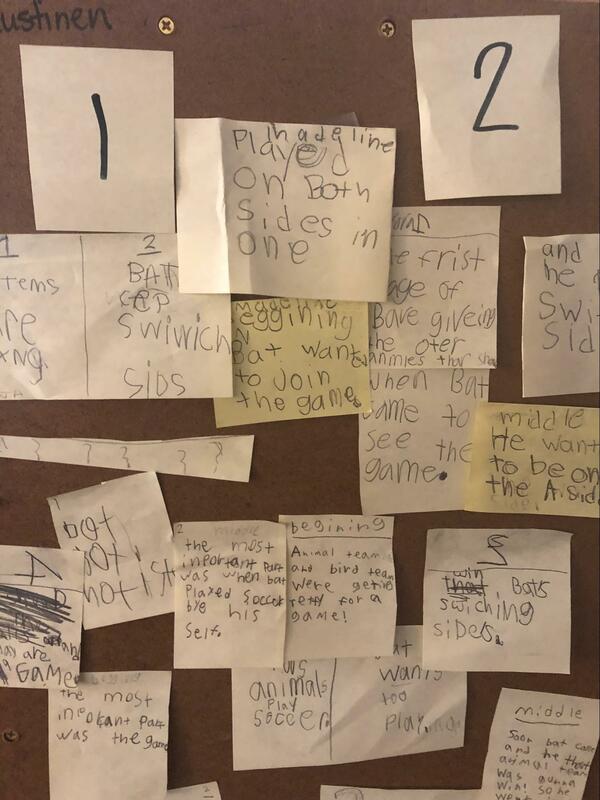
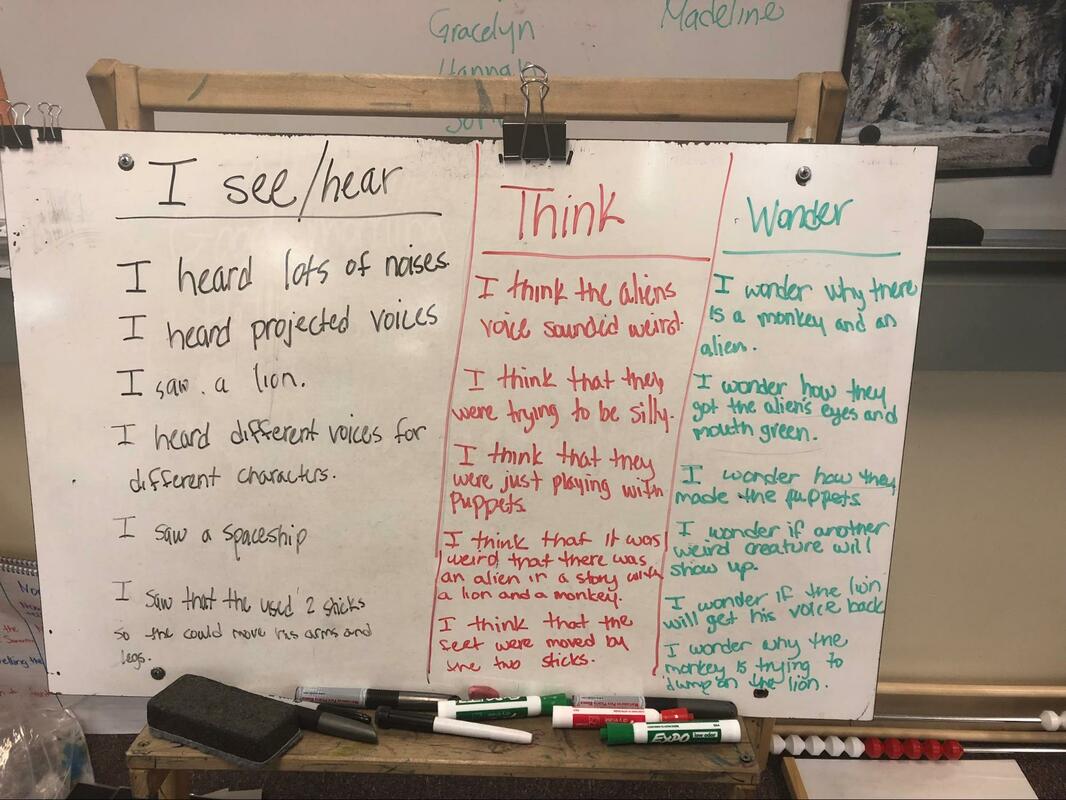
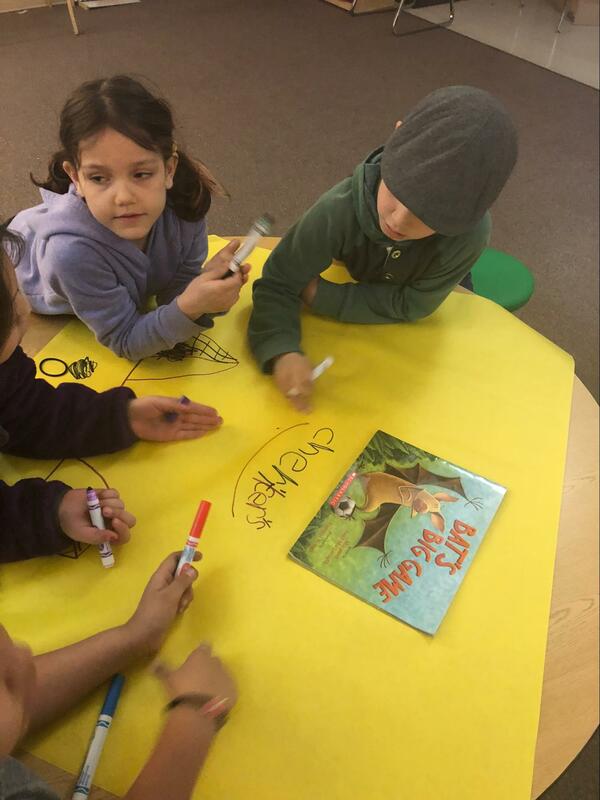
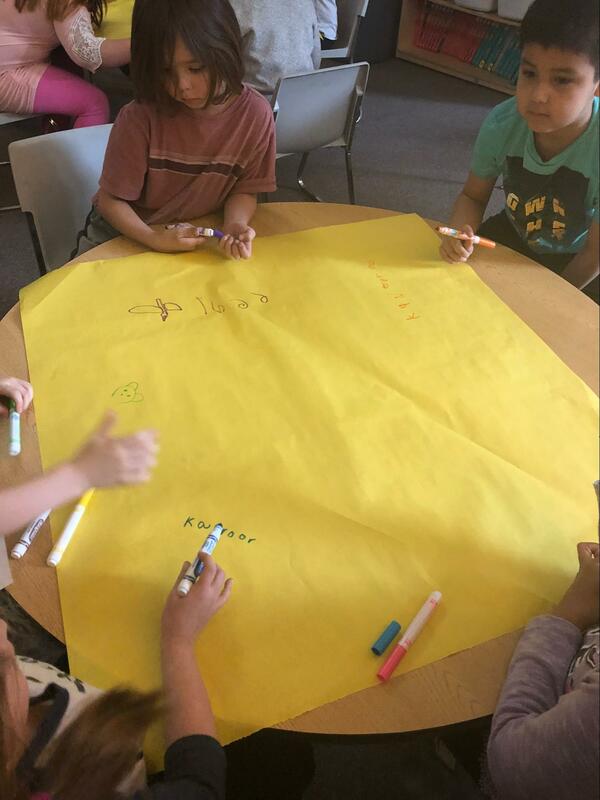
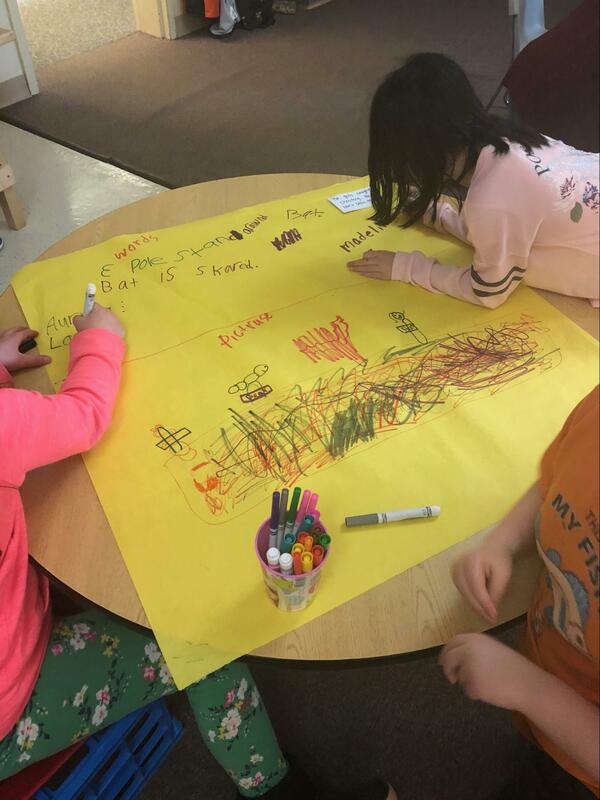
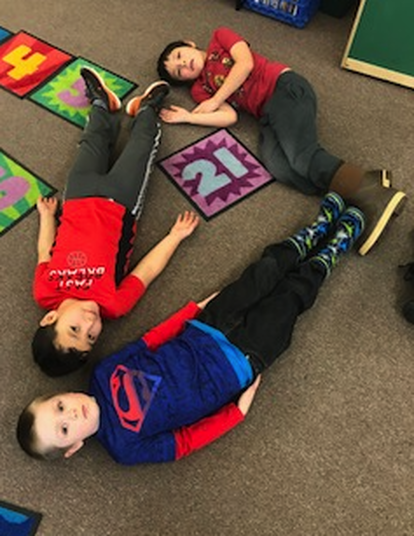
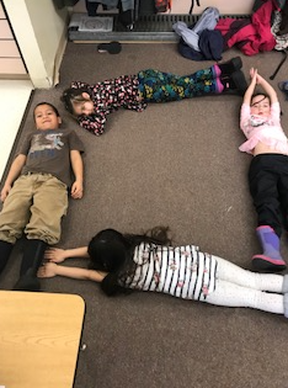
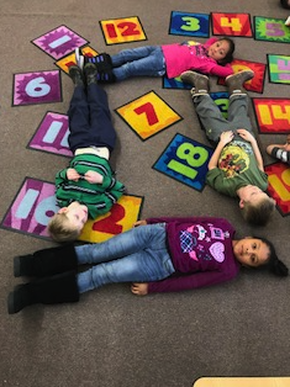
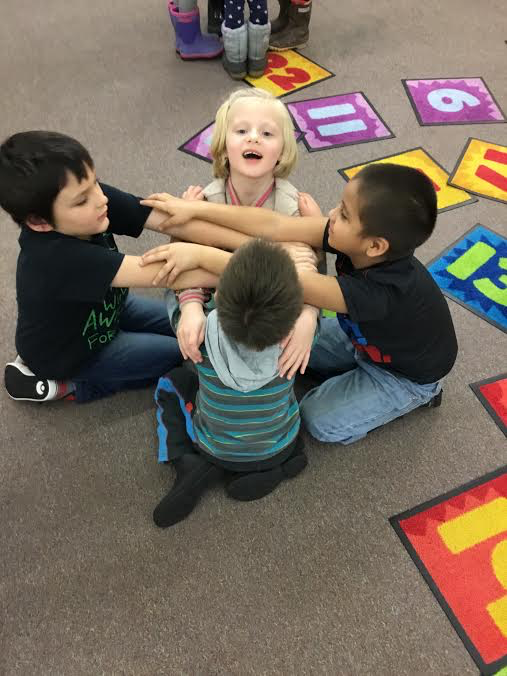
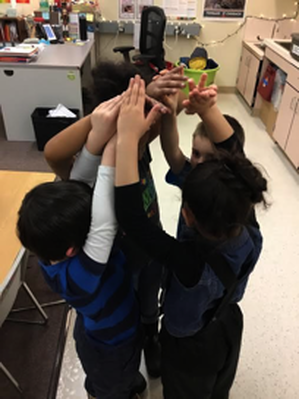
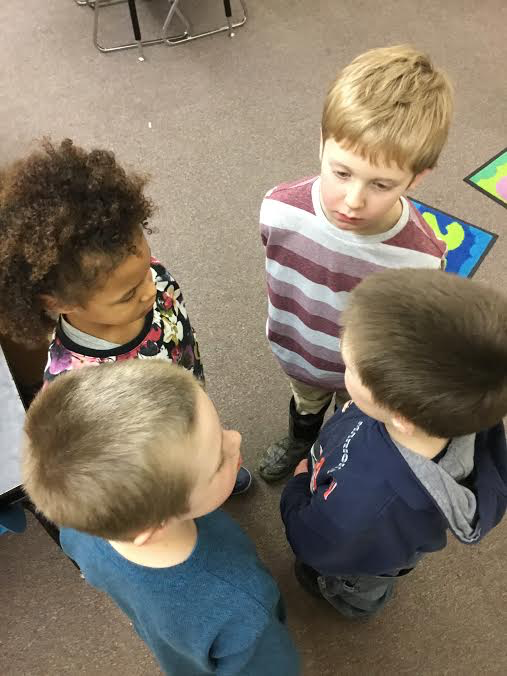
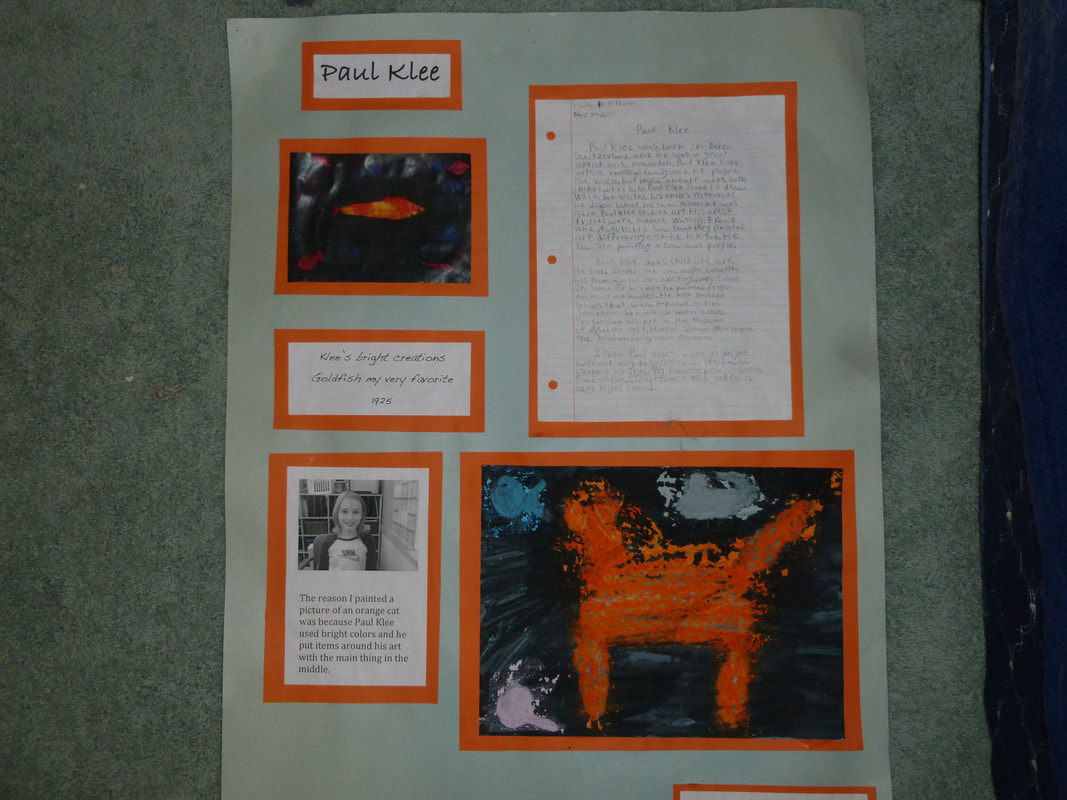
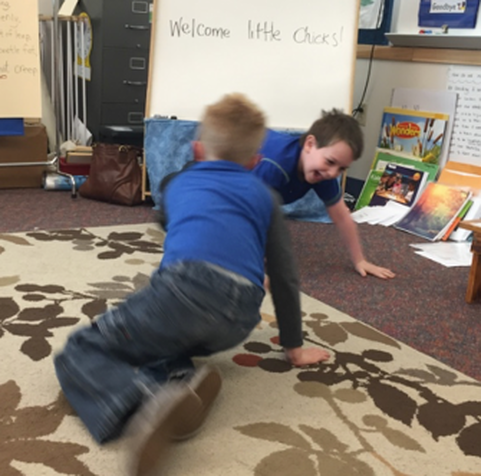
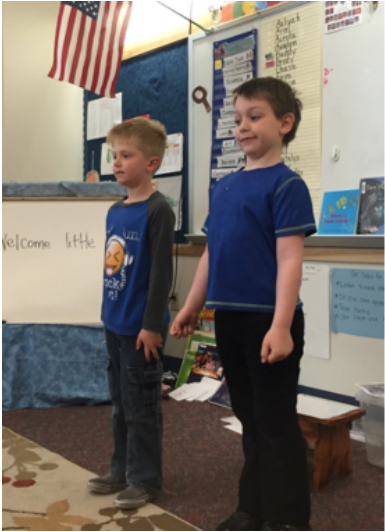

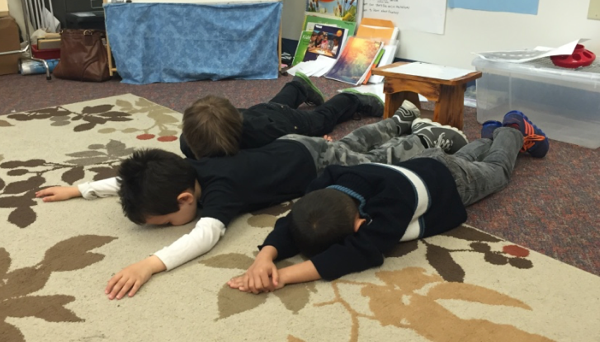
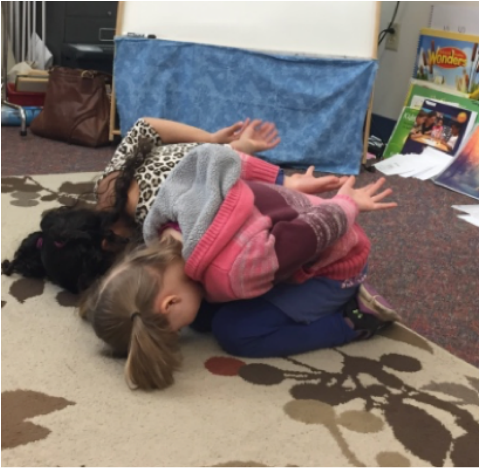
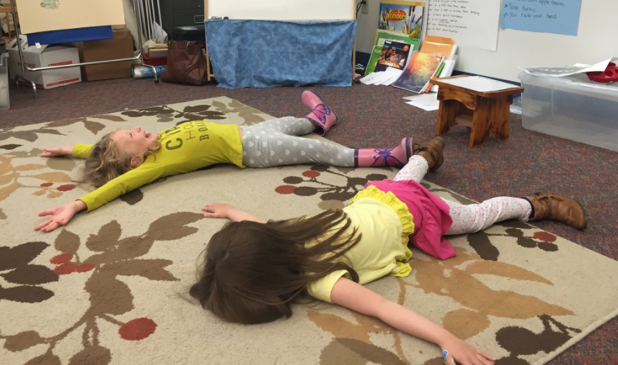
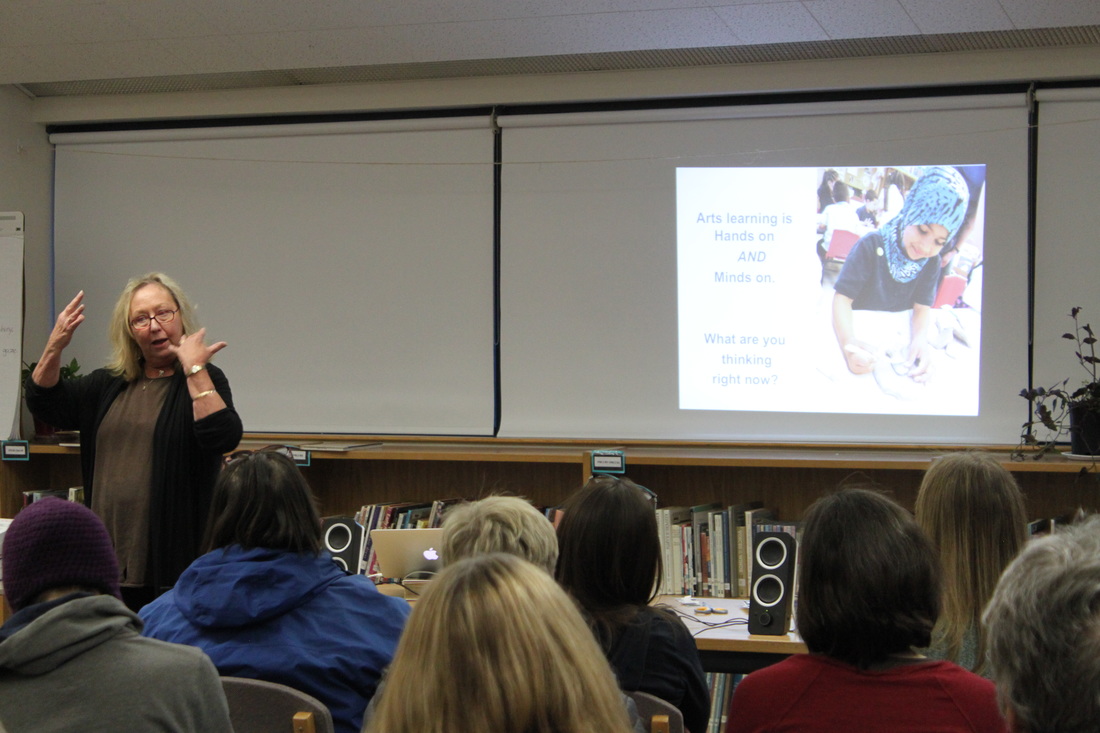
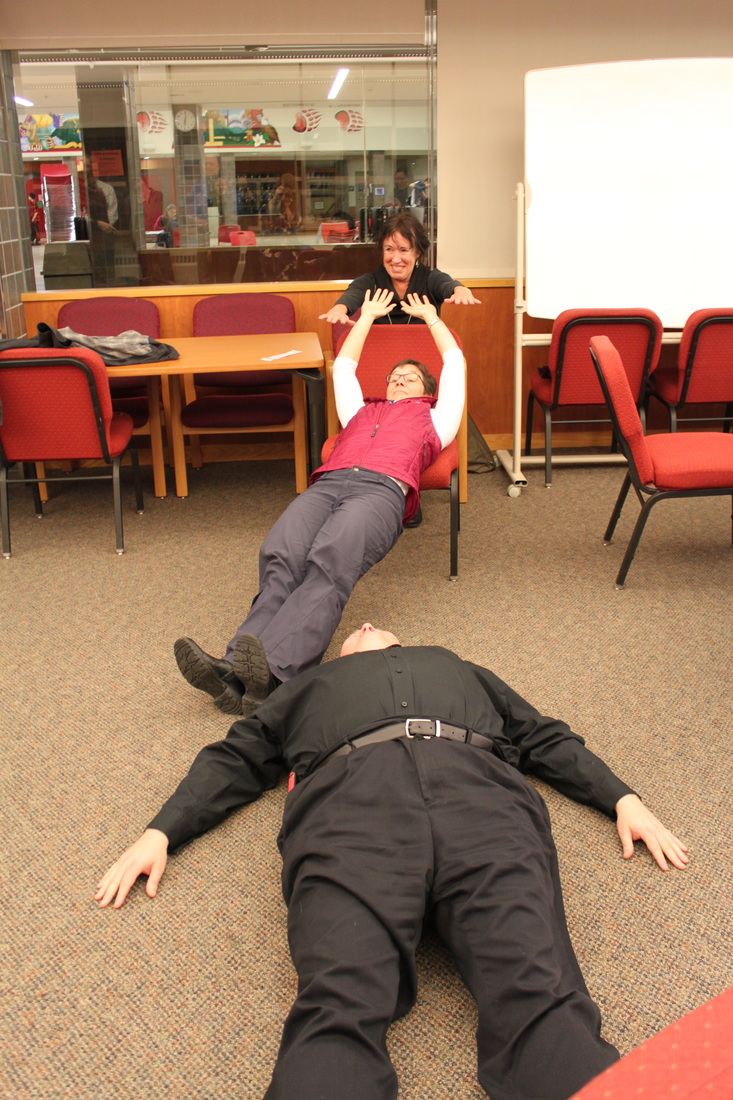
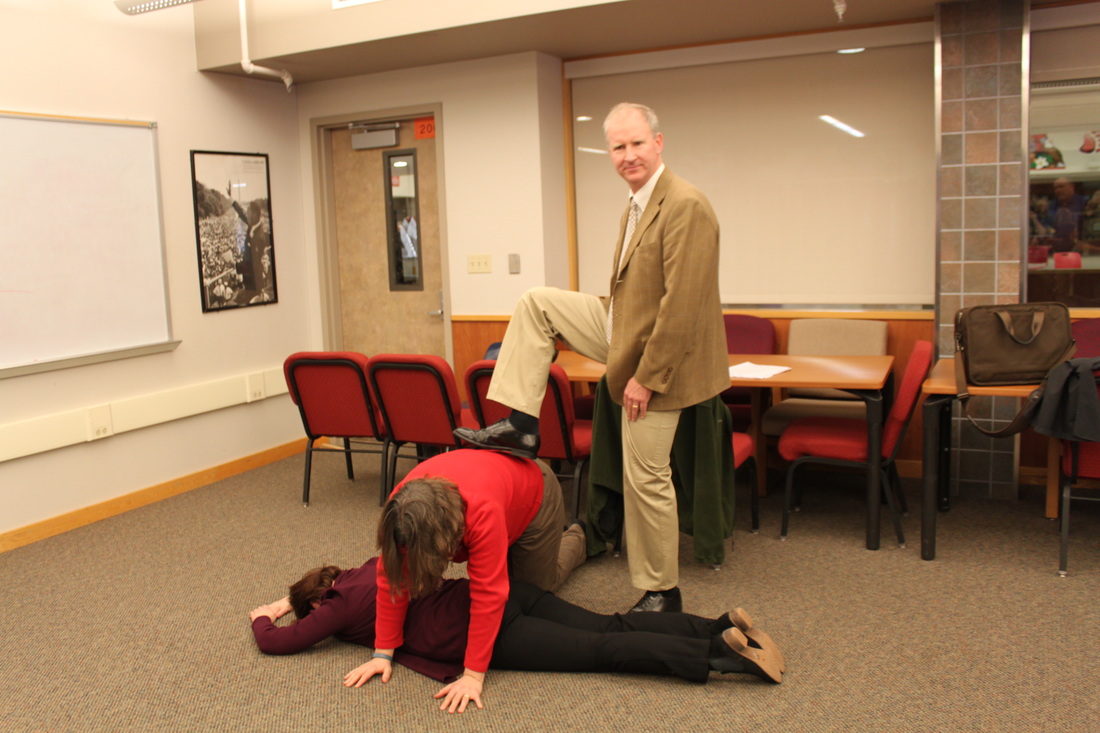
 RSS Feed
RSS Feed